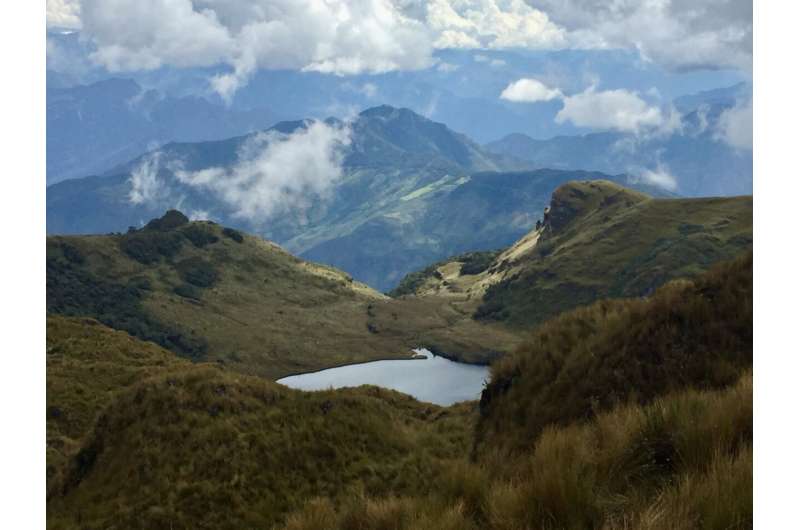This article has been reviewed according to Science X's editorial process and policies. Editors have highlighted the following attributes while ensuring the content's credibility:
fact-checked
peer-reviewed publication
trusted source
proofread
New study finds burning by humans and warming altered Andean ecosystems

Humans moved into the Andes about 15,000 years ago and their introduction of regular fire to the landscape created a new ecosystem, research published in Nature Communications finds.
A team led by Florida Tech professor Mark Bush and graduate student Jake Schiferl at the Institute for Global Ecology published their findings in the paper titled "A neotropical perspective on the uniqueness of the Holocene among interglacials."
The scientists studied hundreds of samples of fossil pollen and charcoal from a 305-foot-long sediment core raised from Lake Junin, at an elevation of more than 13,400 feet in the grasslands of the Peruvian Andes. This sedimentary record spanned the last 670,000 years and represented the longest continuous and empirically-dated record of tropical vegetation change to date.
The pollen showed that the area had undergone seven ice ages, with each separated by a warmer period, known as an interglacial, such as the one in which we live now. "The fossil record revealed how the vegetation around the lake changed with the coming and going of these ice ages," Schiferl said.
The team found that today's ecosystem of high Andean grasslands, pictured above, was quite different from ecosystems found in the other interglacials. In earlier interglacials, the lake was surrounded by a mixture of grasslands and shrublands that developed with no, or very little, fire.
Bush said, "As soon as people arrived in the plateau surrounding the lake, the occurrence of fossil charcoal increased dramatically, indicating that people were burning the landscape."
Understanding how tropical systems have responded to large-scale climate change, such as glacial-interglacial fluctuations, and how human impacts have altered those responses, is key to current and future ecology.
Fires were probably set deliberately to drive game as part of a hunting strategy and to promote new grass growth which would increase the abundance of the hunted animals. The net effect was to send the ecology of the Junin Plateau onto a new path.
The study reveals that the vegetation of our modern interglacial, i.e., the last 12,000 years, started similarly to other interglacials but around 4,000 years ago diverged and became completely different from any of the other warm periods from the last 670,000 years. Modern Andean grassland ecosystems were created by long-term human manipulation of the environment.
These data affirm that the period of profound human environmental alteration, often termed the Anthropocene, began in the Andes about 4,000 years ago. This study adds weight to scholars who suggest that there was an "early" onset of the Anthropocene, as opposed to those who see it as a product of the industrial revolution or oil-based economies.
More information: J. Schiferl et al, A neotropical perspective on the uniqueness of the Holocene among interglacials, Nature Communications (2023). DOI: 10.1038/s41467-023-43231-0
Journal information: Nature Communications
Provided by Florida Institute of Technology


















